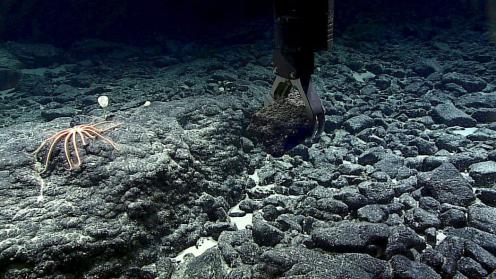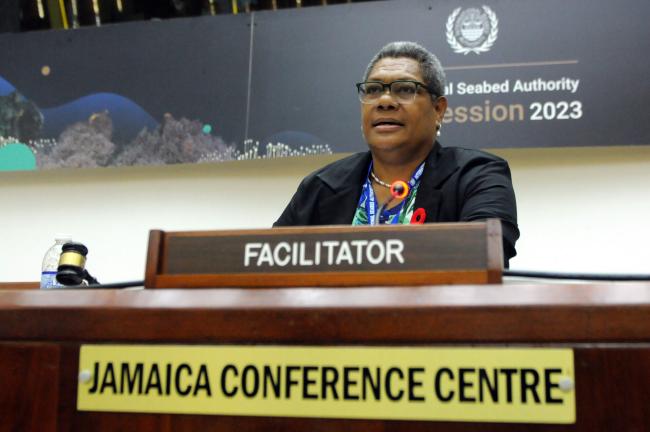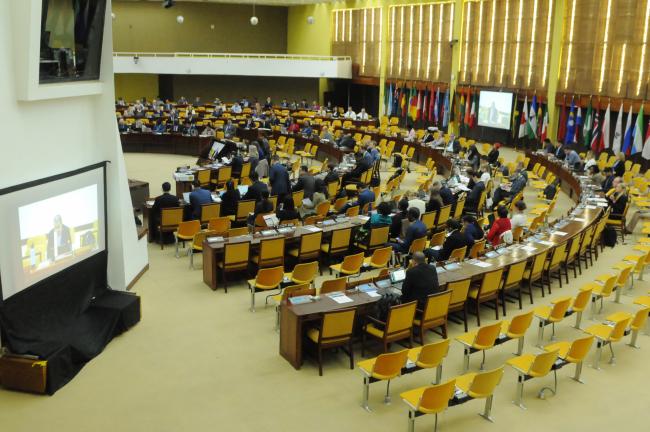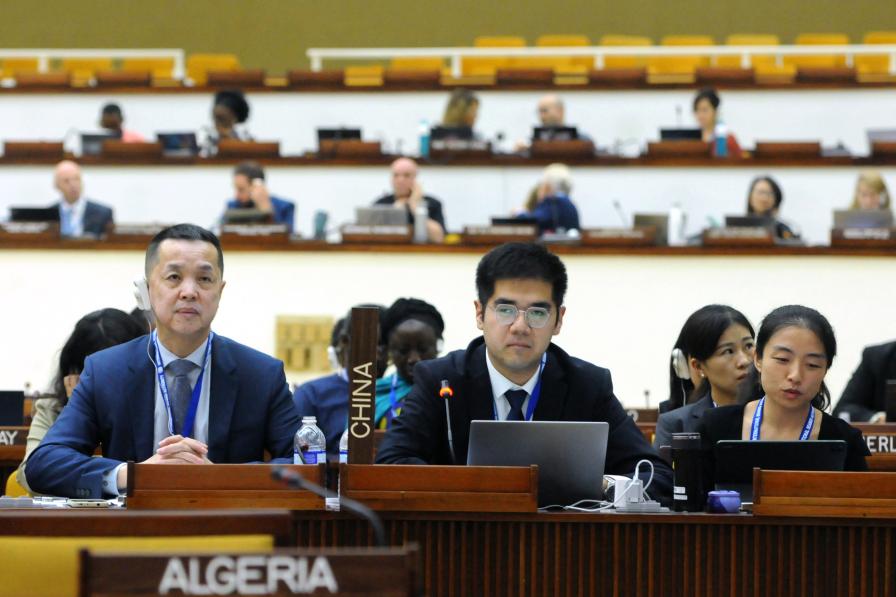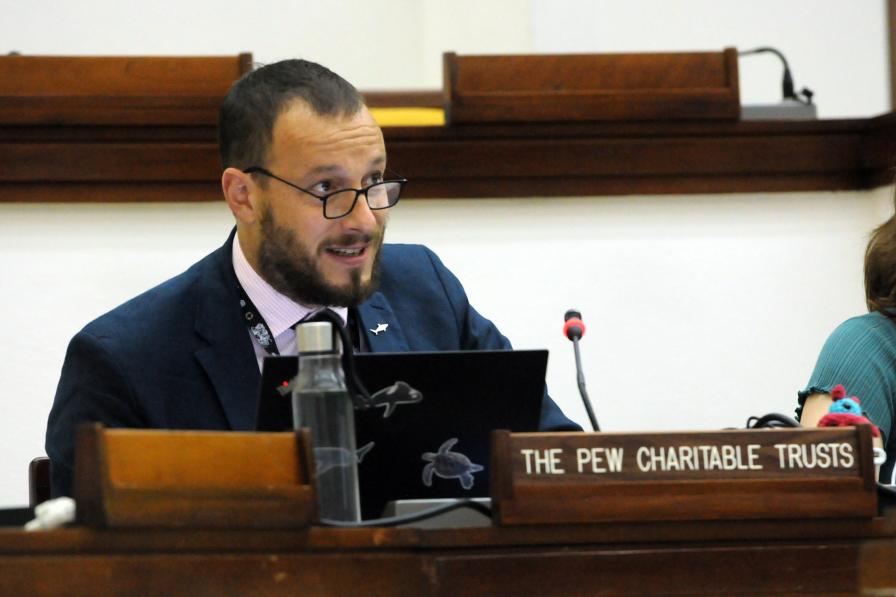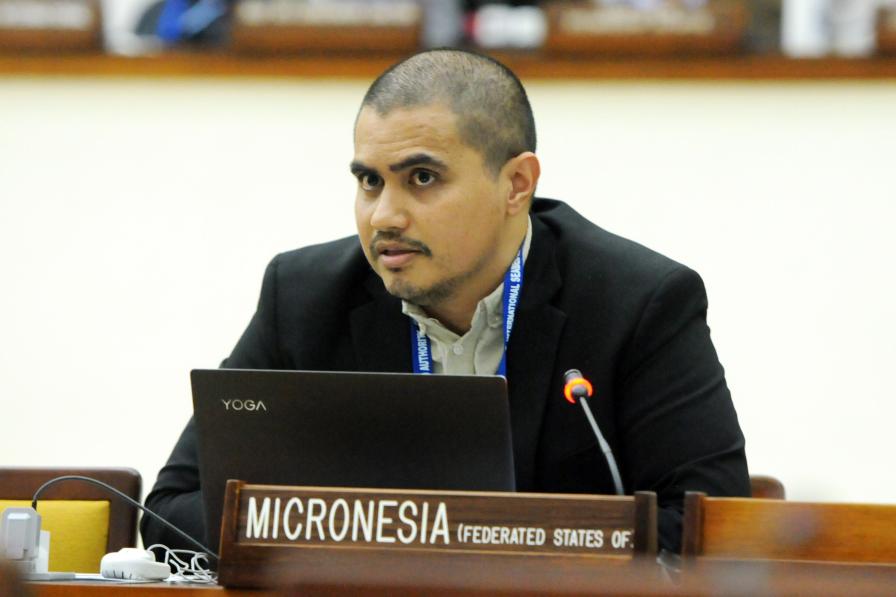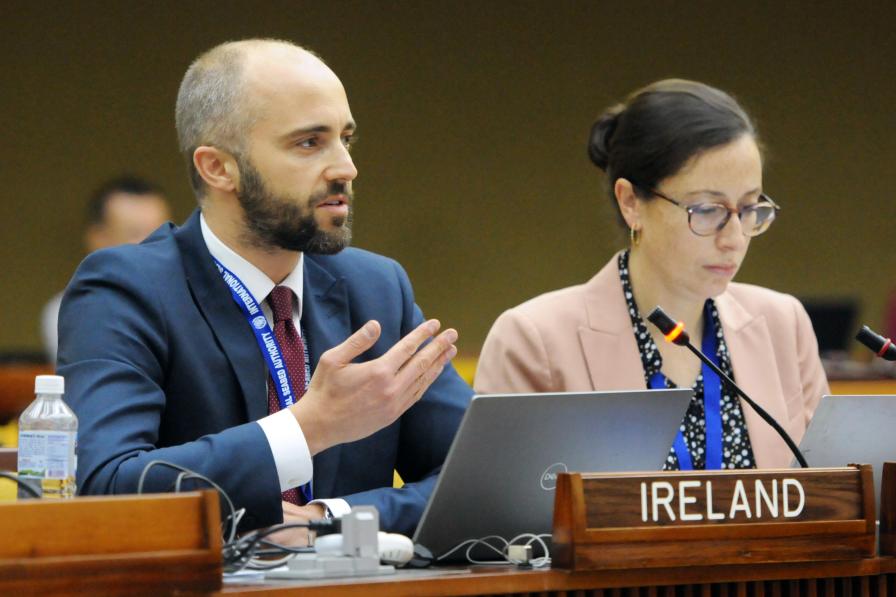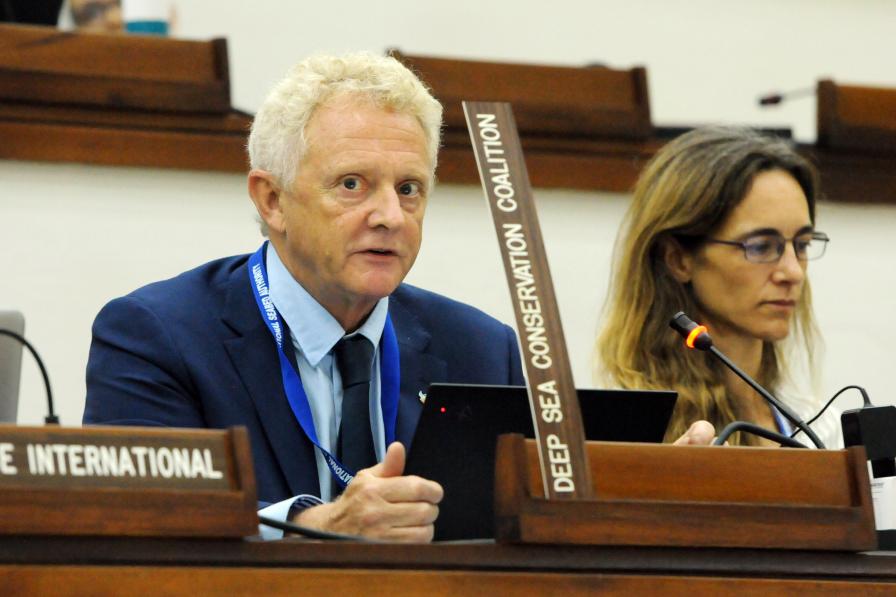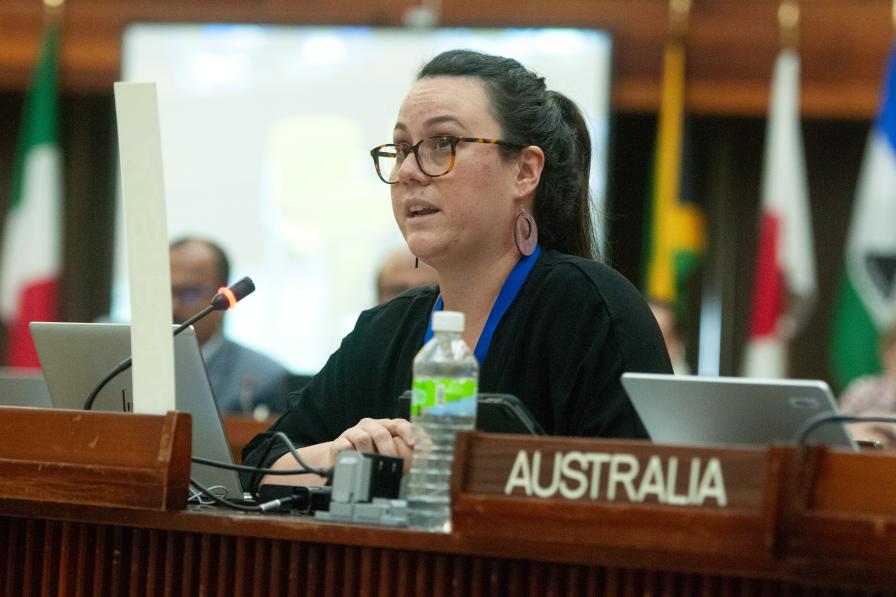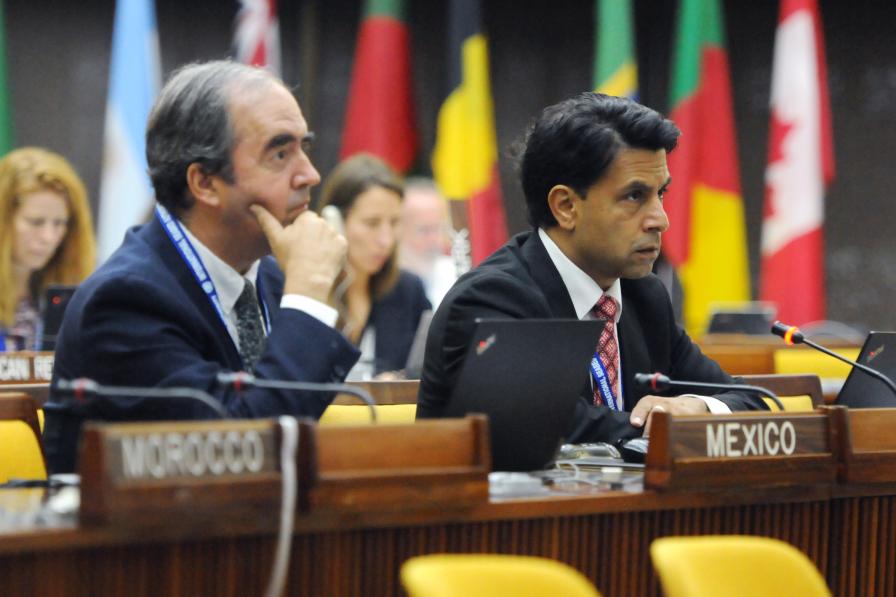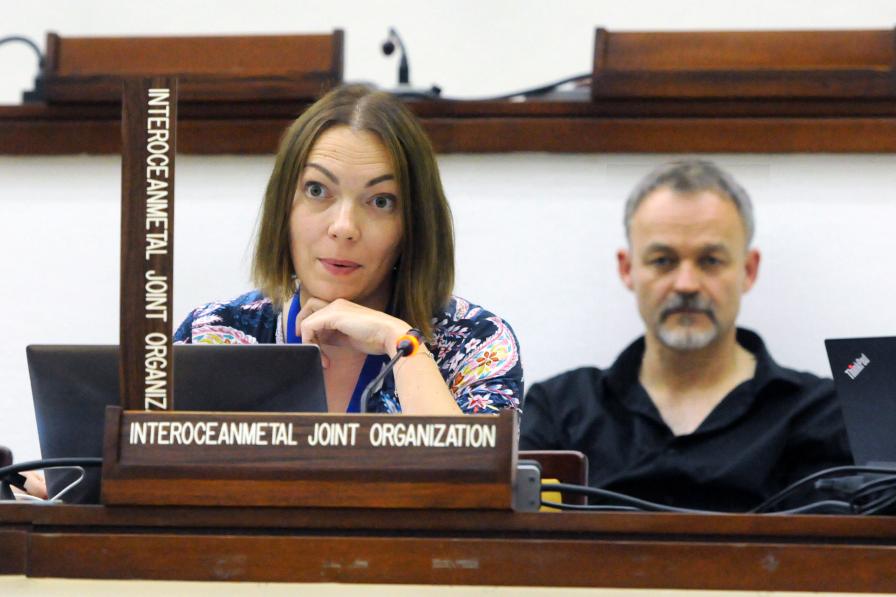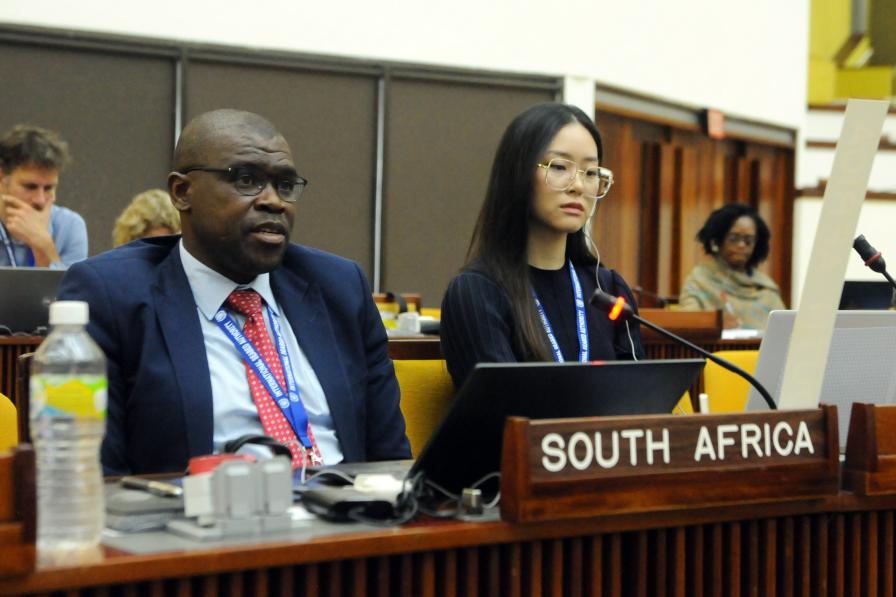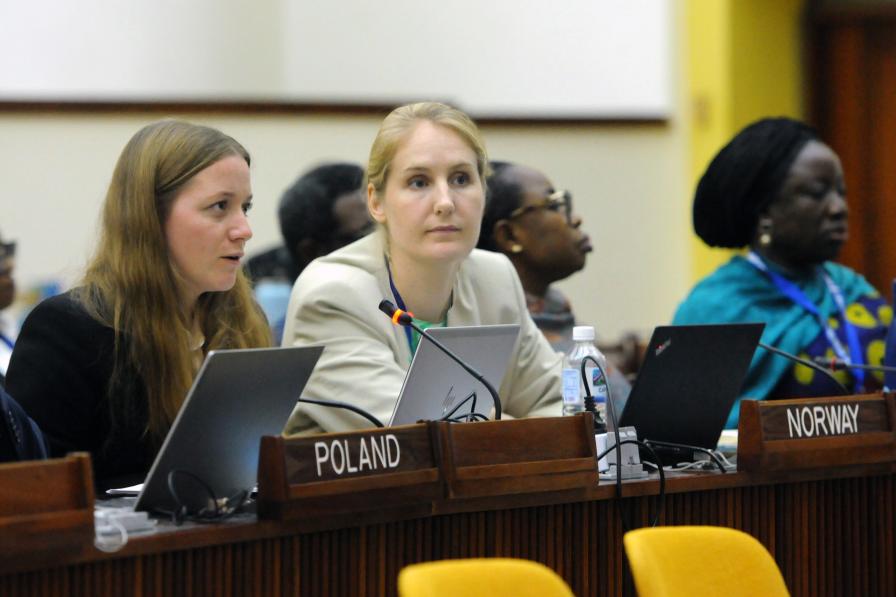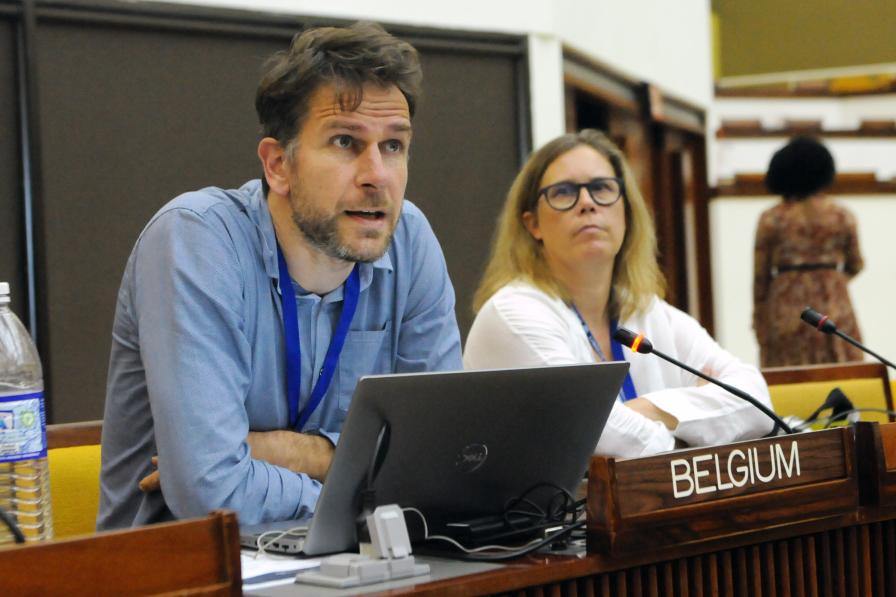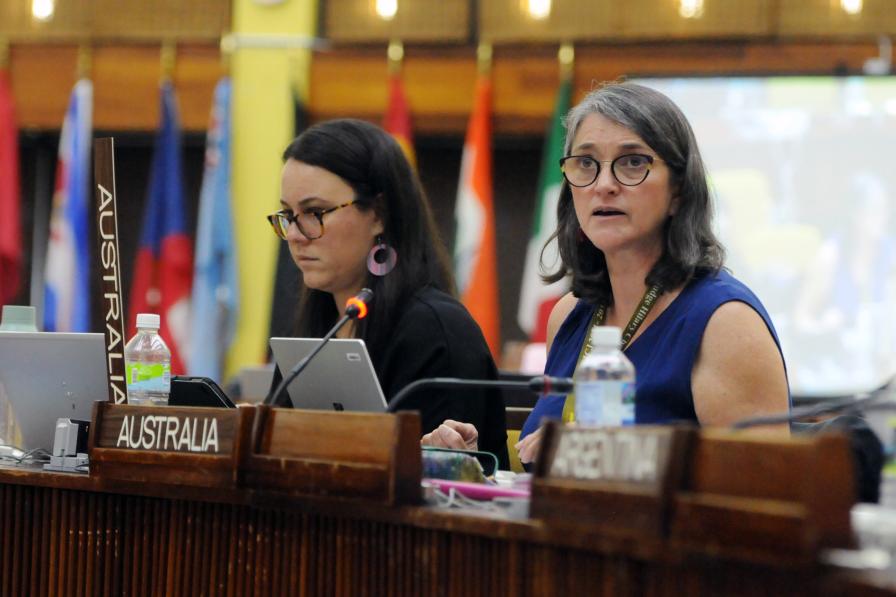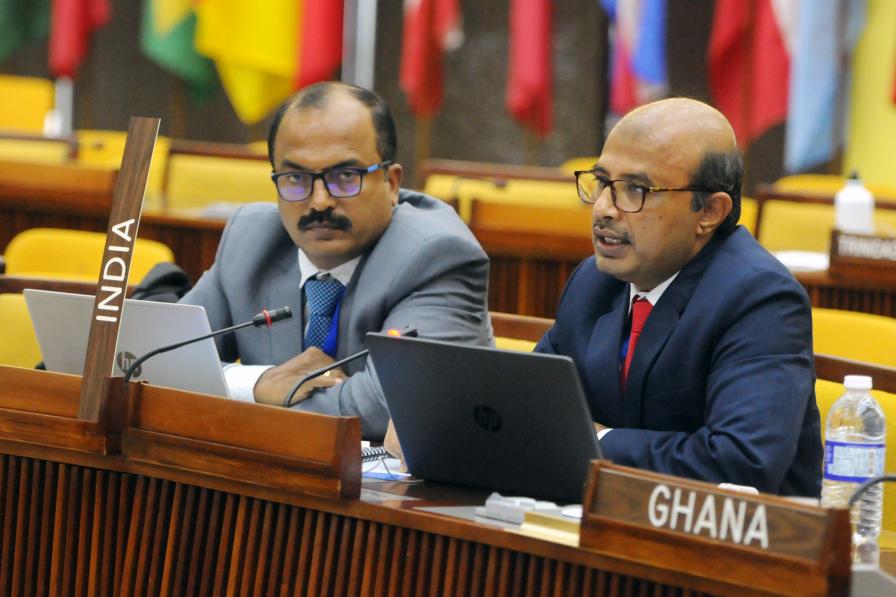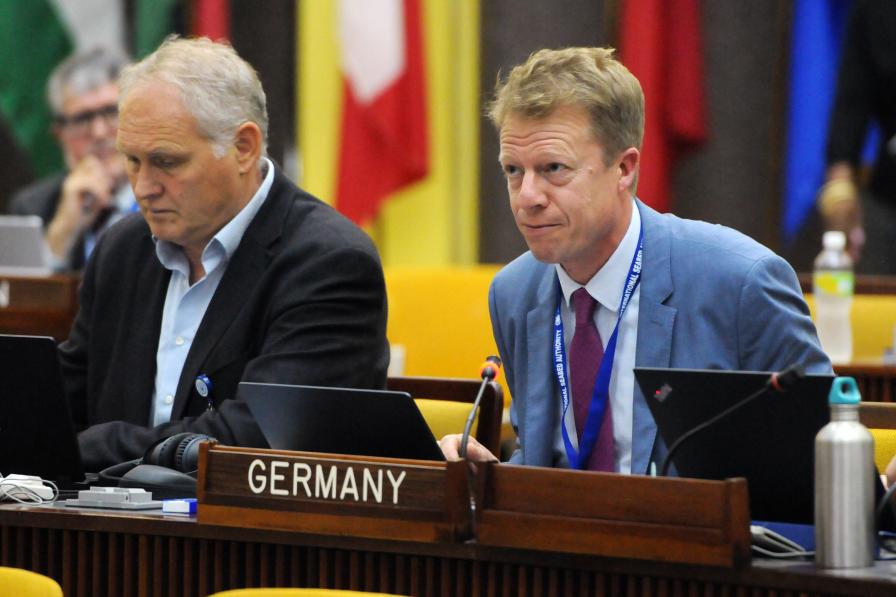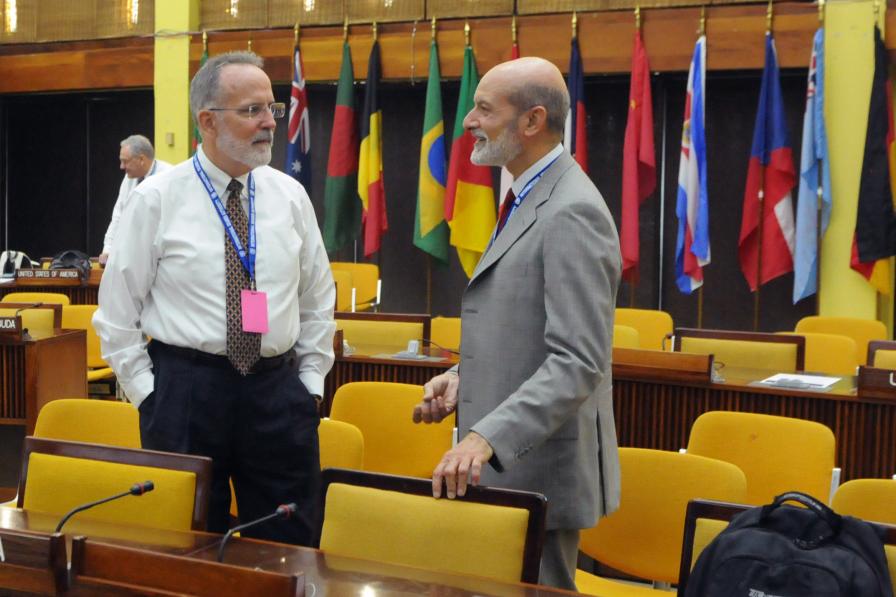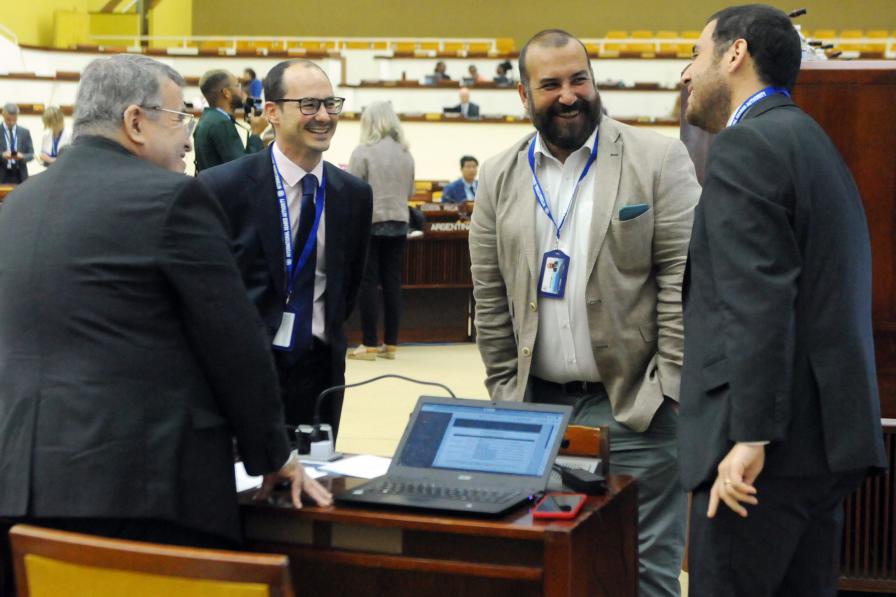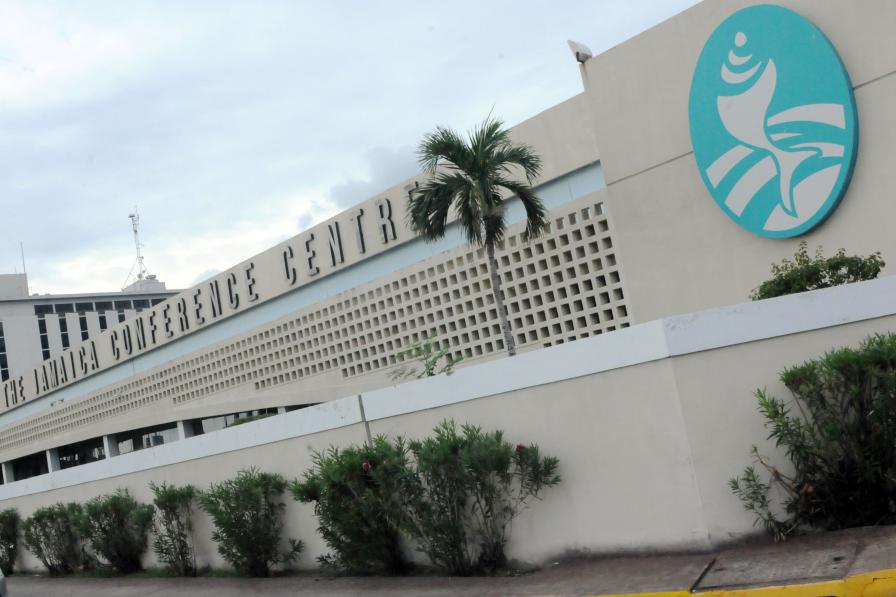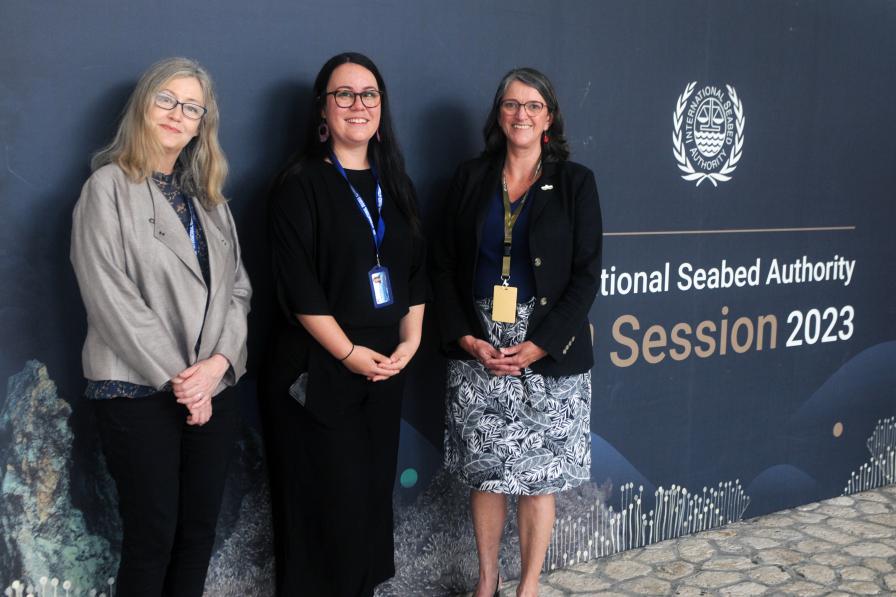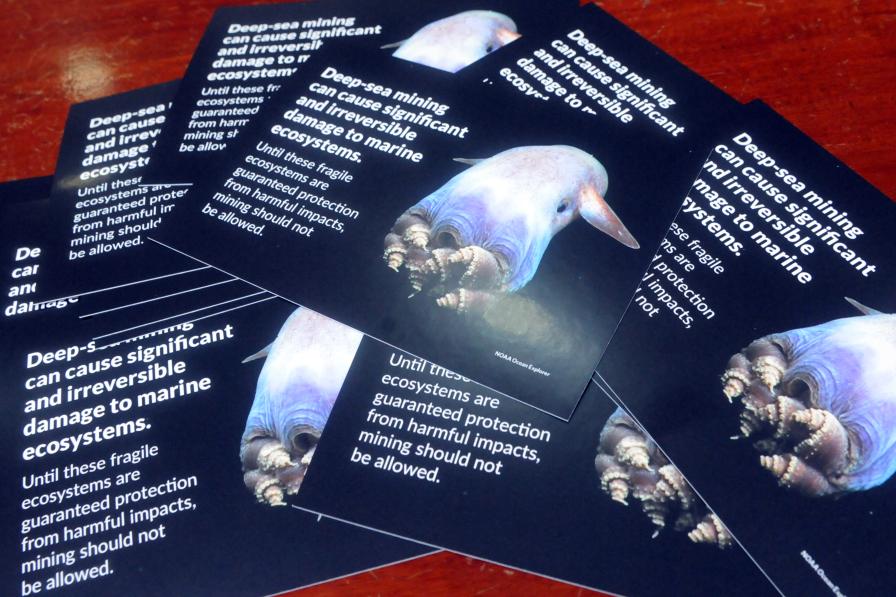Environmental provisions are of paramount importance in the negotiations on the exploitation regulations for deep-sea mining to address concerns about environmental harm due to commercial activities. In that respect, the work of the Informal Working Group on the protection and preservation of the marine environment, facilitated by Raijeli Taga (Fiji), is a central component of the Mining Code of the International Seabed Authority (ISA).
Facilitator Taga opened the session, introducing the fourth revised text and inviting coordinators of intersessional groups to report on progress.
The UK reported on intersessional work on a standardized approach for stakeholders’ consultations. She noted participants agreed on the need for different processes for stakeholders’ consultations and engagement. The duration of these consultation processes requires further discussion.
Denmark, on behalf of Portugal, presented a proposal envisaging targeted and proactive consultation at different stages of a plan of work with “adjacent coastal states and any other coastal states adjacent to the areas of a planned activity when they are potentially most affected states.”
Some delegates expressed appreciation for the proposal, noting it draws from the Agreement on biodiversity beyond national jurisdiction (BBNJ Agreement). Some drew attention to Article 142 (rights and legitimate interests of coastal countries) of the UN Convention on the Law of the Sea (UNCLOS).
Spain presented the outcome of intersessional work on streamlining general obligations, noting two options have been developed for further discussion.
The Federated States of Micronesia presented intersessional work on underwater cultural heritage (UCH). He highlighted an amendment to regulation 35 (human remains and objects and sites of an archaeological or historical nature) to request the ISA to take into account work by the UN Educational, Scientific and Cultural Organization (UNESCO) on UCH, including its Convention on the Protection of the UCH.
Delegates underscored the importance of UCH and supported its inclusion, both in tangible and intangible form. They expressed divergent positions on references to UNESCO, with some noting that not all ISA members are parties to the relevant UNESCO convention.
A delegation elaborated their proposal on the principles, approaches, and policies (regulation 2) regarding the conditions prior the commencement of the exploitation activities, which will be discussed under the working group on institutional matters.
Facilitator Taga invited delegates to address the text regulation by regulation, focusing on those not discussed during the July meeting.
On pollution control (regulation 49), most delegates supported the use of the term “harmful effects” instead of “serious harm” as the trigger for environmental protection measures. Many supported the inclusion of reference to “marine litter and underwater noise,” while a few opposed. Several observers suggested the inclusion of references to greenhouse gas emissions.
On restriction of mining discharges (regulation 50), many delegates supported a formulation including remediation and follow-up obligations for the contractors. Many suggested adding that disposal, dumping, or discharge constitutes a “notifiable event” under regulation 34. Some objected to references to the London Protocol of the Convention on the Prevention of Marine Pollution by Dumping of Wastes and Other Matter. Most delegates supported language that a contractor should update a register of discharges immediately after a discharge event rather than weekly or monthly.
On compliance with the environmental management and monitoring plan (regulation 51), many delegates requested streamlining all draft regulations dealing with monitoring.
On the review of the performance assessment of the environmental management and monitoring plan (EMMP) (regulation 52), some delegates suggested clarifying whether the contractor or an independent auditor shall conduct the performance assessment. Many supported providing an opportunity for stakeholder engagement.
On the emergency response and contingency plan (regulation 53), many delegates supported relocating the draft regulation under the section on pollution control and management of waste, noting that such emergencies may refer to human safety and maritime security, in addition to environmental matters.
On the establishment of an environmental compensation fund (regulation 54), Council members converged that the rules and procedures of the fund shall be established before the approval of the first exploitation plan of work.
On the purpose of the environmental compensation fund (regulation 55), many emphasized that it should be used as a last resort, in cases where the contractor is unable to meet its liability and the sponsoring states are not liable. Some suggested periodically reviewing the fund’s scope.
On the funding of the environmental compensation fund (regulation 56), a regional group noted links with work under the Working Group on financial matters.
On closure plans (regulation 59), several members noted the need to simplify the text. Regarding the return of the mined site to its natural state after closure, some delegates suggested adding “to the possible extent.” Observers underscored the irreversible nature of damage to the seabed.
On the final closure plan: cessation of production (regulation 60), delegates discussed alternative time frames for different processes associated with the final closure plan, with many supporting longer time frames. An observer suggested drafting a separate part on contractors’ obligations during a temporary suspension.
On post-closure monitoring (regulation 61), some delegates noted that the exact period should be stated, allowing sufficient time for latent effects to materialize, further suggesting setting a minimum period for post-closure monitoring and retaining the necessary flexibility to adjust it as needed.
To receive free coverage of global environmental events delivered to your inbox, subscribe to the ENB Update newsletter.
All ENB photos are free to use with attribution. For the 3rd Part of the 28th Annual Session of the ISA, please use: Photo by IISD/ENB | Diego Noguera
